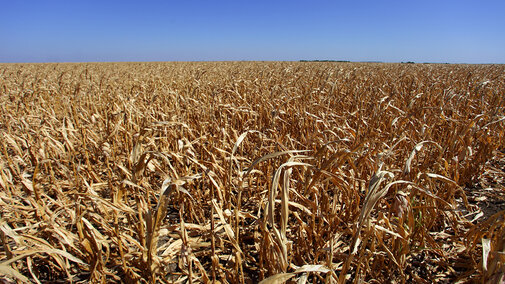Cornstalk residue is a tremendous resource for fall and winter grazing; however, this year care needs to be taken in grazing drought-stressed cornstalks due to the potential of high nitrates in the feed.
Cattle prefer grazing the leaves and husk, which tend to be lower in nitrates. Because drought-stressed corn is smaller and stunted, it is more likely that cattle will eat lower into the stalk where nitrate levels may be high. Nitrates are usually concentrated in the bottom third of the stalk in the corn plant.
High nitrates may not only be an issue in dryland acres, but also on irrigated corn edges and in the corners where water hasn't reached and plants are stunted. Cattle tend to prefer these drought-stressed plants when grazing. There is the potential that cattle could seek out those plants when first turned onto a pivot-irrigated field.
Due to the shortage of feed this year, producers are more likely to leave cows grazing cornstalks longer than they normally would to try to stretch feed resources. Forcing cows to eat more of the stalks increases the risk that they will be consuming parts of the corn plant that could be toxically high in nitrates.
For suggestions on how to graze these potentially high nitrate cornstalks, see this article by Nebraska Extension Educator Aaron Berger on UNL Beef.

